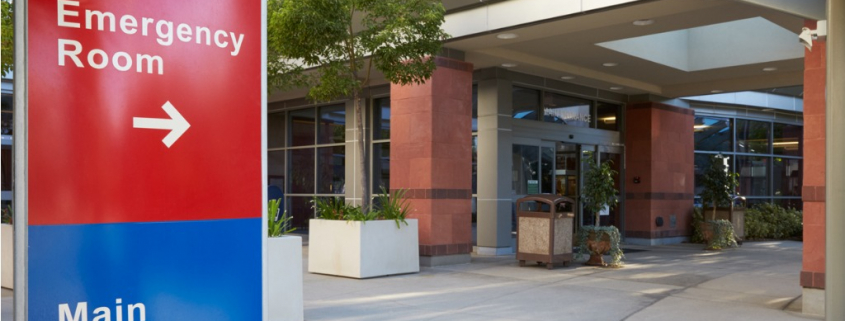US Telecardiology Services To Diagnose Heart Disease In 2025
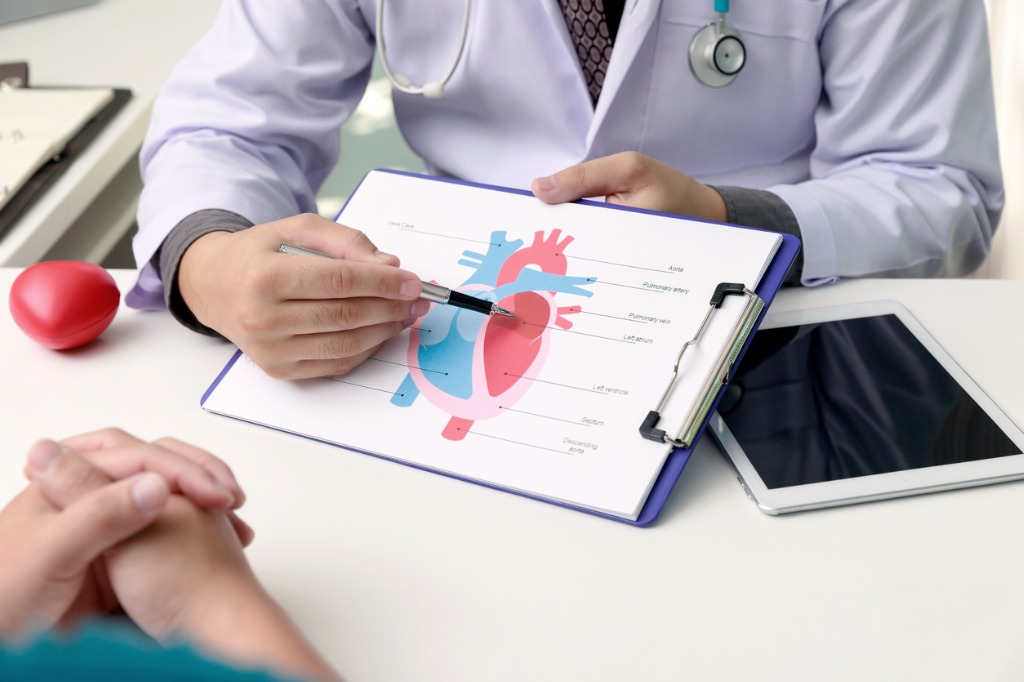
NDI cardiologists use telecardiology services to obtain cardiac imaging studies online and to diagnose chronic and acute heart disease for referring physicians. Subspecialized NDI cardiac imaging doctors study heart disease and heart abnormalities. NDI’s U.S.-based telecardiology services support virtual care and benefit patients with heart disease, including congestive heart failure, cardiac arrest and arrhythmia.
In 2025, NDI cardiologists use telecardiology services to obtain cardiac imaging studies online to diagnose chronic and acute heart disease for referring physicians.
In 2025, National Diagnostic Imaging telecardiology services are leading to an improved level of patient care in the United States.
With telecardiology, diagnosing problems via ECGs has become much easier and quicker.
Telecardiology can be used to treat a variety of heart conditions, including:
- Coronary Artery Disease
- Congenital Heart Defects
- Heart Failure
- Arrhythmia
- Chest Pain
- Sudden Cardiac Arrest
In 2025, the easiest way to get online access to telecardiology services in the U.S. is to call the National Diagnostic Imaging Telecardiology Company at 1-800-950-5257 or email info@ndximaging.com.
Telecardiology is a medical practice that uses technology to remotely diagnose and treat heart conditions. Telecardiology services can include:
Electrocardiograms (ECGs)
A cardiologist can use a device to record and transmit an ECG to a remote facility for interpretation.
Videoconferencing
A cardiologist can connect with a patient face-to-face, even if they are in different locations.
Echocardiograms
An echocardiogram uses ultrasound technology and electrodes to check the heart’s valves and chambers, and how blood moves through the heart.
Telecardiology Services
Telecardiology services can help with a variety of heart conditions, including: coronary artery disease, congestive heart failure, arrhythmias, and cardiac arrest.
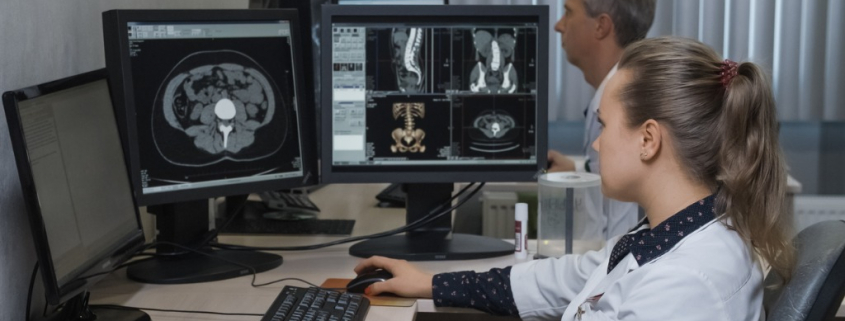
NDI telecardiology services are used by primary care physicians to electronically share cardiac imaging studies online with NDI cardiologists who write expert ECG interpretations and deliver actionable final reports that help to save lives.
The NDI telecardiology company provides remote online reporting of cardiac imaging studies of the circulatory system, cardiovascular system, heart and blood vessels.
NDI telecardiology services are a specialized version of telemedicine used by primary care physicians in the United States to help treat patients with cardiac problems.

Family physicians contract with telecardiology companies such as National Diagnostic Imaging to get access to telecardiology services in order to improve their treatment of patients with heart rhythm disorders (HRD) and cardiovascular disease.
NDI telecardiology services improve the speed, quality and cost-effectiveness of treating patients with cardiovascular disease on the primary level.
Cardiovascular disease (CVD) is a general term that describes a disease of the heart or blood vessels.
Video About The NDI Telecardiology Company
NDI cardiologists use teleradiology to receive radiological patient images 24/7 that are shared online by other radiologists and physicians.
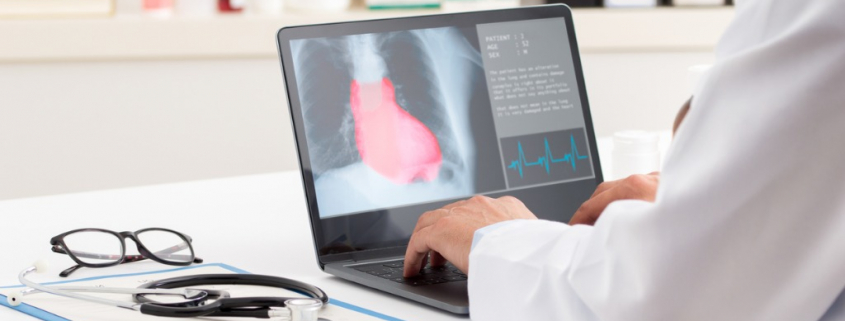
NDI telecardiology services are used by U.S. cardiovascular imaging centers to receive remote interpretations of electrocardiogram (ECG or EKG) results from heart imaging specialists online.
Treating physicians use NDI telecardiology services to order and receive cardiac imaging study final reports written by NDI imaging cardiologists that are delivered in PDF format.
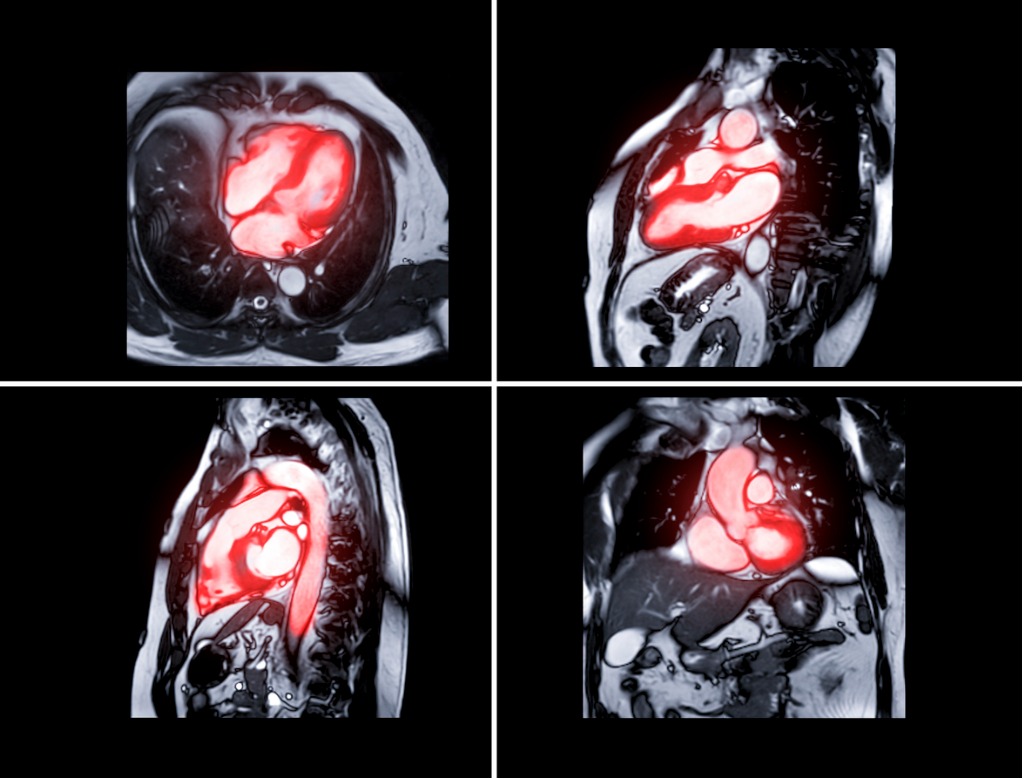
Cardiac magnetic resonance imaging (cardiac MRI or CMR) produces detailed images of the beating heart.
NDI cardiologists interpret cardiac magnetic resonance imaging (MRI) studies and state their cardiac MRI findings in reports that are provided online to healthcare providers and patients.
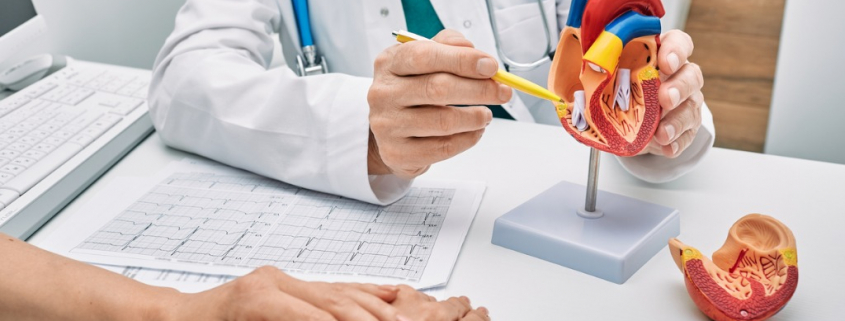
NDI diagnostic radiologists are licensed in all 50 states to use telecardiology services to collaborate with other physicians and to interpret cardiac imaging studies.
NDI Telecardiology Reporting Services For Cardiac Imaging Studies
- Echocardiogram (echo).
- Cardiac positron emission tomography (PET).
- Cardiac computed tomography (CT).
- Nuclear cardiac stress test.
- Coronary angiogram or left heart catheterization.
- Cardiac MRI.
National Diagnostic Imaging provides telecardiology services, cardiac imaging interpretations, mobile EKG reporting services, remote cardiology reading services and echocardiogram (echocardiography) reading services in the USA.
National Diagnostic Imaging Telecardiology Services For Hospitals And Emergency Events Like Myocardial Infarctions
NDI provides telecardiology services to remote hospitals and emergency rooms located throughout the United States.
In 2025, NDI telecardiology services is reducing the number of unnecessary hospital admissions and referrals.
National Diagnostic Imaging provides around-the-clock cardiology coverage to enable hospitals to see more cardiac patients and to provide more effective treatment.
NDI telemedicine and telecardiology services enable clinicians who are treating cardiac emergencies to quickly connect with experienced U.S. board certified cardiovascular specialists. NDI cardiologists (heart doctors) are physicians who are experts in the care of the heart and blood vessels.
NDI cardiologists provide emergency consultations. Hospitals in the United States deploy NDI telecardiology services for critical care echocardiography (CCE).
The American College of Emergency Physicians (ACEP) believes that the communication of diagnostic imaging tests and diagnostic study results is critical to the evaluation and management of emergency department (ED) patients.
Percutaneous coronary intervention (PCI) is recommended as the standard treatment for acute myocardial infarction. Telecardiology improves the quality of diagnosis and reduces delays in treatment of elderly patients with acute myocardial infarction and atypical presentation.
NDI provides radiology reading services via teleradiology in all 50 states. Radiology reading fees start at $12 per study. Get information on telecardiology report turnaround times, here.
NDI cardiologists interpret the following studies via teleradiology and submit their findings to referring physicians via a PACS, and in some cases, by email:
- Echocardiogram
- ECG, Stress ECG
- Nuclear Stress Test (Including Stress ECG)
- Stress Echocardiogram (Including Stress ECG)
- Coronary CTA
- Cardiac MRI.
NDI doctors are U.S. Board Certified and hold certifications in Echocardiography. We provide interpretations for cardiologists, cardiology clinics, hospitals, private physicians, urgent care centers, internal medicine departments, cardiac surgeons and heart specialists.
What Is An Echocardiogram?
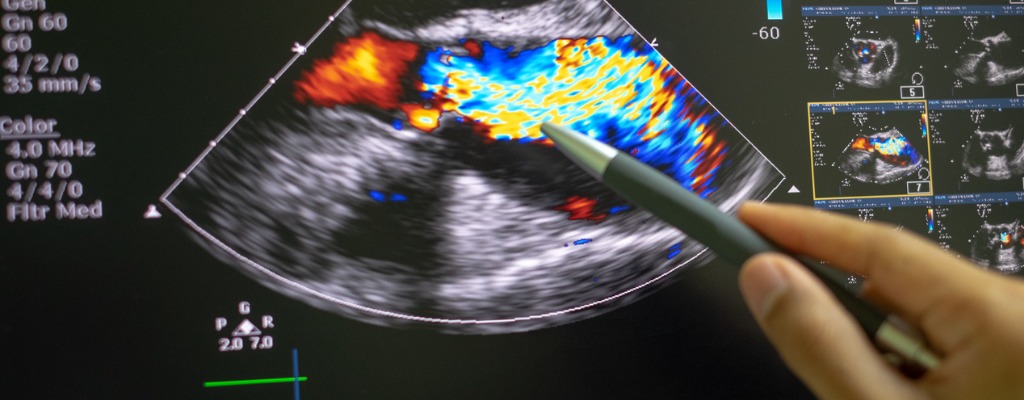
There are several types of echocardiography (echo)—all use sound waves to create pictures of your heart. This is the same technology that allows doctors to see an unborn baby inside a pregnant woman. Unlike x-rays and some other tests, echo doesn’t involve radiation.
An echocardiography, echocardiogram, cardiac echo or simply an echo, is an ultrasound of the heart. It is a type of medical imaging of the heart, using standard ultrasound or Doppler ultrasound.
Five Types Of Echocardiograms
- Transthoracic Echocardiography
- Stress Echocardiography
- Transesophageal Echocardiography
- Fetal Echocardiography
- Three-Dimensional Echocardiography
Echocardiography has become routinely used in the diagnosis, management, and follow-up of patients with any suspected or known heart diseases. It is one of the most widely used diagnostic imaging modalities in cardiology.
It can provide a wealth of helpful information, including the size and shape of the heart (internal chamber size quantification), pumping capacity, location and extent of any tissue damage, and assessment of valves.
An echocardiogram can also give physicians other estimates of heart function, such as a calculation of the cardiac output, ejection fraction, and diastolic function (how well the heart relaxes).
Echocardiology Credentialing In the United States
The “Intersocietal Accreditation Commission for Echocardiography” (IAC) sets standards for echo labs across the US. Cardiologists and sonographers who wish to have their laboratory accredited by IAC must comply with these standards.
There are two credentialing bodies in the United States for sonographers, the Cardiovascular Credentialing International (CCI), established in 1968, and the American Registry for Diagnostic Medical Sonography (ARDMS).
The American Society of Echocardiography (ASE) is a professional organization made up of physicians, sonographers, nurses, and scientists involved in the field of echocardiography. One of the most important roles that the ASE plays is providing their recommendations through the ASE Guidelines and Standards, providing resource and educational opportunities for sonographers and physicians in the field.
Artificial Intelligence (AI) And Echocardiography
AI image-recognition programs can read heart images faster and speed care.
There are various institutes who are working on use of artificial intelligence in echocardiography. AI is currently encountered in automated ECG interpretation, cardiac CT and MRI chamber measurements, and most recently two-dimensional (2D) echocardiography strain analysis and Doppler tracing.
Although AI has been around since the 1950s, there has only recently been a surge of interest and research in the use of AI in medical imaging. AI techniques, such as machine learning, can be used to recognize a wide range of patterns within echocardiograms as they can take account of each pixel, and their relationship, as well as associated clinical metadata. Machine learning models can be trained to ‘learn’ what different features in an image represent so that they can be used to identify images, quantify areas of interest or be associated with particular disease patterns
Contact National Diagnostic Imaging For Information On U.S. Based Telecardiology Services
Please complete the form below, call 216-514-1199 or email info@ndximaging.com to request a quote for telecardiology services. Get more information on teleradiology pricing here.
To Request a Quote For Telecardiology Services Complete The Form Below
Teleradiology Rates and Radiology Reading Service Prices for Organizations
Teleradiology prices for outpatient imaging centers, hospitals, medical organizations, doctors and radiology groups are based on a fee per study model or split billing. Our professional fees for interpreting radiological exams on patient images are determined by modality.
Cardiology reading services and interpretations services start at $13 per study based on the imaging modality and volume. Rates for remote echocardiography reading services start at at $28 per study.
NDI is a U.S. teleradiology service based in Cleveland, Ohio. Teleradiology prices and radiology reading fees for imaging centers, hospitals, medical organization, doctors and radiology groups are based on a per study-per month model. Our cost effective professional fees for timely interpreting radiological exams on patient images are determined by modality (CT, MR, US, etc.), volume of studies an imaging facility produces per month, expected report turn-around times and Universal Medicare and Medicaid reimbursement.
2025 Teleradiology And Telecardiology Reading And Interpretation Fees
-
- CT Scan Reads And Interpretation Rates From $40 Per Study
- X-Ray Scan Reads And Interpretation Rates From $12 Per Study
- Cardiology Scan Reads And Interpretation Rates From $14 Per Study
- MRI Scan Reads And Interpretation Rates From $48 Per Study
- Musculoskeletal (MSK) Scan Reads And Interpretation Rates From $12 Per Study
- Ultrasound Scan Reads And Interpretation Rates From $25 Per Study
- Mammogram Scan Reads And Interpretation Rates From $32 Per Study
- Echocardiogram Scan Reads And Interpretation Rates From $45 Per Study
- PET CT Reading, Interpretation And Reporting Rates From $99 Per Study
- Nuclear Imaging Reading, Interpretation And Reporting Prices From $36 Per Study
- B Reads, B Reading Interpretations and B-Reader Fees From $38 Per Study
Contact National Diagnostic Imaging For A Teleradiology Quote
Please complete the form below, call 216-514-1199 or email info@ndximaging.com to request a quote for a radiology interpretations or reading services.
How NDI Cardiologists Diagnose Heart Disease Online
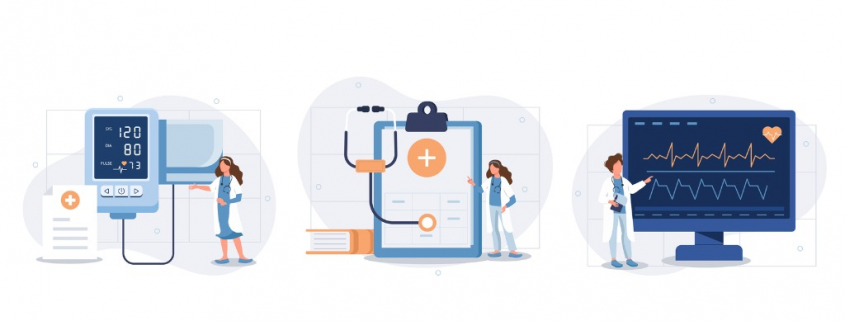
Heart disease tests include echocardiograms, electrocardiograms, chest X-rays, CT scans, and MRI scans. An ECG is often used alongside other tests to help diagnose and monitor conditions affecting the heart. It can be used to investigate symptoms of a possible heart problem, such as chest pain, palpitations (suddenly noticeable heartbeats), dizziness and shortness of breath.
NDI cardiologists use a PACS workstation to interpret results from patient cardiac imaging studies, diagnostic radiology exams and diagnostic medical imaging tests.
PACS is used in cardiology departments. Cardiology has unique requirements; these needs come in the form of capturing sound, certain cardiac measurements, and structured cardiac catheter laboratory (cath-lab) and echocardiography laboratory reporting.
Cath-lab and echo are the chief modalities that are connected to a cardiology PACS. Others include cardiac magnetic resonance imaging (MRI) and cardiac computer tomography (CT). Cardiology PACS uses information produced by these 4 modalities.
Echocardiography, including stress echocardiography, can provide the required clinical information and avoids radiation exposure.
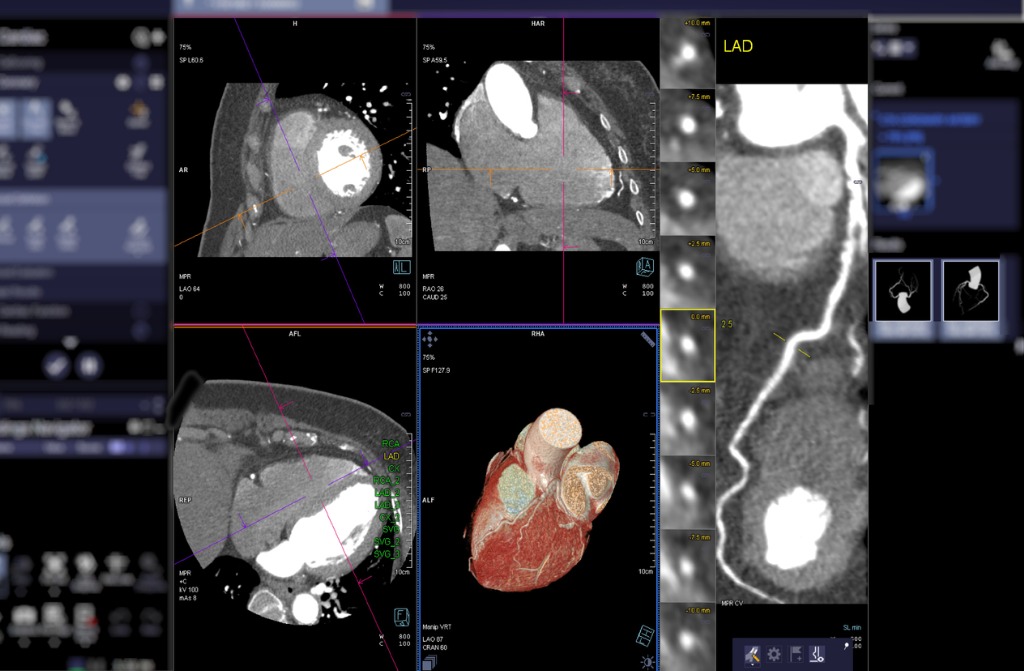
CT coronary angiography is increasingly used to detect coronary artery disease in patients with an intermediate risk and in those with equivocal stress test results.
Cardiac MRI studies are ordered by a patient’s cardiologist as an adjunct to other imaging modalities when further clarification is warranted. Cardiac MRI is an advanced imaging test used to obtain detailed views of the heart.
Once a cardiac image is generated, PACS is used to transfer that digital image to a computer network that will store the image and display the image for physicians. Learn more about PACS, computer networks and teleradiology in this PDF.
A picture archiving and communication system (PACS) is a high-speed, graphical, computer network system for the storage, recovery, and display of diagnostic radiological images.
NDI radiologists use PACS to diagnose heart disease, to dictate their findings and critical results, to write and sign their final radiology report and to deliver their conclusions in PDF format via teleradiology.
Cardiac imaging providers and treating physicians use high speed Internet connections to transmit pictures of a patient’s heart to the National Diagnostic Imaging PACS system.
Many different tests are used to diagnose heart disease. Besides blood tests and a chest X-ray, tests to diagnose heart disease can include:
- Electrocardiogram (ECG or EKG). An ECG is a quick and painless test that records the electrical signals in the heart. It can tell if the heart is beating too fast or too slowly.
- Holter monitoring. A Holter monitor is a portable ECG device that’s worn for a day or more to record the heart’s activity during daily activities. This test can detect irregular heartbeats that aren’t found during a regular ECG exam.
- Echocardiogram. This noninvasive exam uses sound waves to create detailed images of the heart in motion. It shows how blood moves through the heart and heart valves. An echocardiogram can help determine if a valve is narrowed or leaking.
- Exercise tests or stress tests. These tests often involve walking on a treadmill or riding a stationary bike while the heart is monitored. Exercise tests help reveal how the heart responds to physical activity and whether heart disease symptoms occur during exercise. If you can’t exercise, you might be given medications.
- Cardiac catheterization. This test can show blockages in the heart arteries. A long, thin flexible tube (catheter) is inserted in a blood vessel, usually in the groin or wrist, and guided to the heart. Dye flows through the catheter to arteries in the heart. The dye helps the arteries show up more clearly on X-ray images taken during the test.
- Heart (cardiac) CT scan. In a cardiac CT scan, you lie on a table inside a doughnut-shaped machine. An X-ray tube inside the machine rotates around your body and collects images of your heart and chest.
- Heart (cardiac) magnetic resonance imaging (MRI) scan. A cardiac MRI uses a magnetic field and computer-generated radio waves to create detailed images of the heart.
Detecting Heart Disease: Cardiac CT v. Stress Testing
Video Posted To YouTube.com On November 14, 2014 by Holy Cross Health
Fort Lauderdale, FL cardiac imaging specialist Claudio Smuclovisky, MD, talks about the most common cause of death in the world – heart disease – and how technology at Holy Cross Hospital in South Florida can detect cardiovascular disease years before it is detectable by traditional tests and screenings. Cardiac CT using our 256 slice CT scanner provides detailed 3D images of the heart, its vessels, involves 90% less radiation than nuclear stress testing, and the images are acquired rapidly – within two heart beats.
Cardiac MRI in Valvular Heart Disease
Posted On YouTube.com On August 27, 2015 by Marcus Heart Valve Center
Magnetic resonance (MR) imaging is playing an increasing role in the management of valvular heart disease. Marcus Heart Valve Center cardiovascular imaging specialists Dr. Venkat Polsani and Dr. Randy Martin discuss two cases that highlight how MR imaging can be used as a planning tool for surgery, allowing high resolution images of the structure and function of the valves, hemodynamic information and volumetric analysis. Learn more at http://www.piedmont.org/valvelearning.
What Is Cardiology?
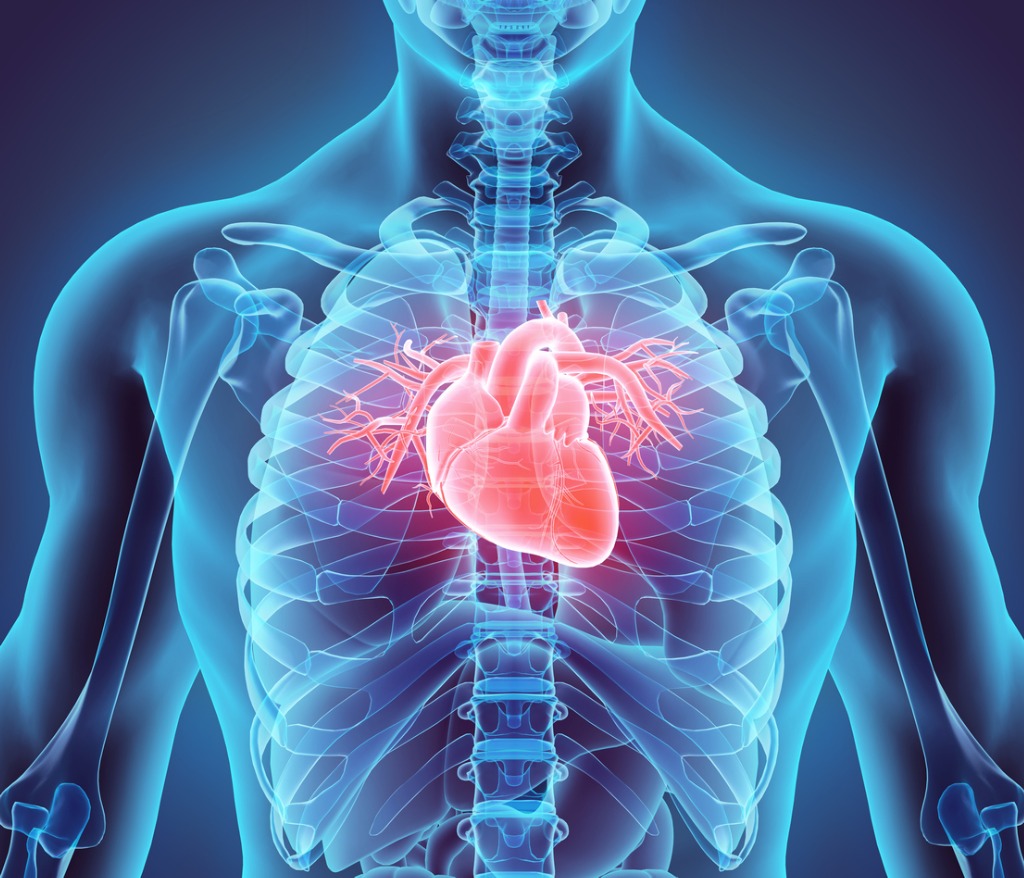
Cardiology is a branch of medicine that deals with disorders of the heart and the cardiovascular system. The field includes medical diagnosis and treatment of congenital heart defects, coronary artery disease, heart failure, valvular heart disease and electrophysiology.
Cardiology is a medical specialty and a branch of internal medicine concerned with disorders of the heart. It deals with the diagnosis and treatment of such conditions as congenital heart defects, coronary artery disease, electrophysiology, heart failure and valvular heart disease. Subspecialties of the cardiology field include cardiac electrophysiology, echocardiography, interventional cardiology and nuclear cardiology.
Physicians who specialize in this field of medicine are called cardiologists, a specialty of internal medicine. Pediatric cardiologists are pediatricians who specialize in cardiology. Physicians who specialize in cardiac surgery are called cardiothoracic surgeons or cardiac surgeons, a specialty of general surgery.
The American College of Cardiology, a 49,000-member nonprofit medical society, is dedicated to enhancing the lives of cardiovascular patients through continuous quality improvement, patient-centered care, payment innovation and professionalism.
NDI reads and interprets cardiac imaging studies, tests, exams, scans and images. Fellowship trained and US board certified NDI cardiologists provide final radiology reports with conclusions, online radiology reporting services, remote cardiac imaging reading and interpretation services to our customers via teleradiology.
What Is Telecardiology?
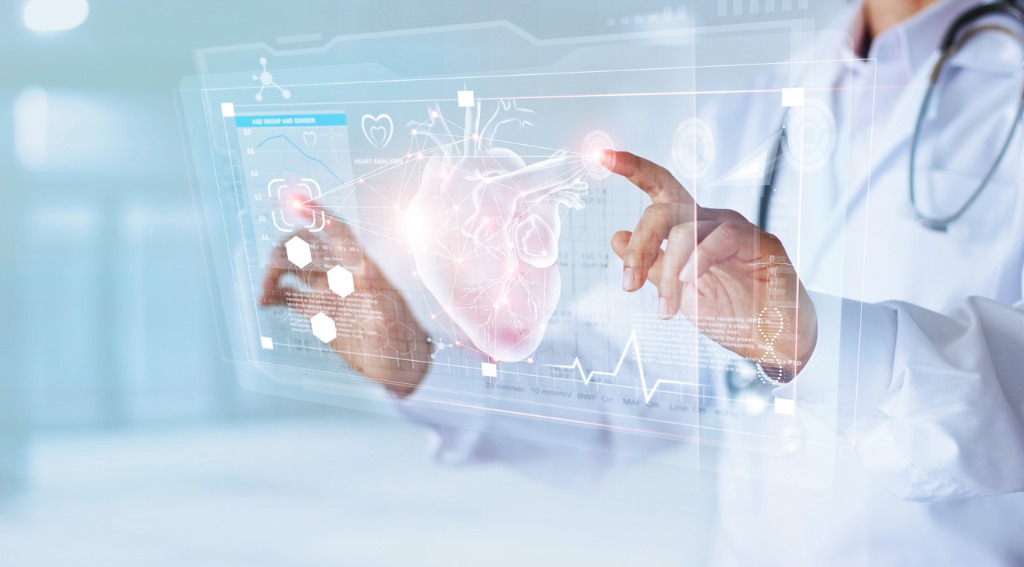
Remote treating and referring physicians in the U.S. use NDI telecardiology services to transmit electrocardiographic data and cardiac imaging results in real-time to NDI cardiac imaging specialists who interpret the studies, write reports and deliver their final reports online.
Telecardiology is a medical practice that uses telecommunications to remotely diagnose and treat heart conditions. It allows a cardiologist to consult with a patient in a different location using videoconferencing, remote monitoring devices, and electronic health records.
Telecardiology can help people in remote areas access specialist care. It can also help general practitioners diagnose and manage heart conditions, and potentially screen patients at risk.
In 2023, the Butler VA clinic in Pennsylvania, implemented telecardiology to improve access to care for Veterans residing in the more rural communities.
Telecardiology is a modern medical practice that allows remote specialists to interpret electrocardiographic recordings in order to diagnose, treat and manage patients with congestive heart failure, cardiac rhythm disorders, prehospital chest pain, arrhythmias and other heart-related conditions.
Heart rhythm disorders (HRD) are often present in patients visiting their family physician (FP).
Arrhythmia affects millions of people each year. Some types of arrhythmia are hard to diagnose whereas others do not present any danger for health but can still cause symptoms and discomfort to patients.
Through the transmission of clinical data and the electrocardiogram, telecardiology allows access to a real-time assessment (teleconsultation) without any need to travel for both patient and cardiologist.
NDI telecardiology services leverage telecommunication systems to enable NDI cardiologists to remotely diagnosis and treat heart disease.
In 2022, NDI telecardiology services contributed to the improved management of cardiac disease in primary care settings throughout the United States.
The COVID-19 pandemic accelerated the use of telehealth across many healthcare specialties, including cardiology.
Telemedicine represents a good solution for the management of patients with cardiac problems. Telecardiology, in particular, guarantees continuity of care.
The use of NDI telecardiology services can shorten the time from diagnosis to the necessary treatment and reduce mortality in patients with acute myocardial infarction.
Telecardiology can shorten the time to diagnose atrial fibrillations and help determine the diagnosis for patients complaining about heart rhythm disorders which were not detected on the standard ECG recording.
Telecardiology helps to identify cardiac causes for syncope or collapse. The use of telecardiology significantly reduces the number of unnecessary referrals to a cardiologist or hospitalization, and shortens the time needed to treat patients with life-threatening conditions.
Telemedicine, and by extension, telecardiology, consists in providing consultation over a distance using telecommunication strategies to improve the patient’s health status. Telecardiology employs modern technology for real-time remote diagnosis and treatment of heart disease. It fulfills the needs of the patients for fast, reliable, sustainable and less expensive services. It makes care more accessible, thus increasing healthcare overall and improving outcomes.
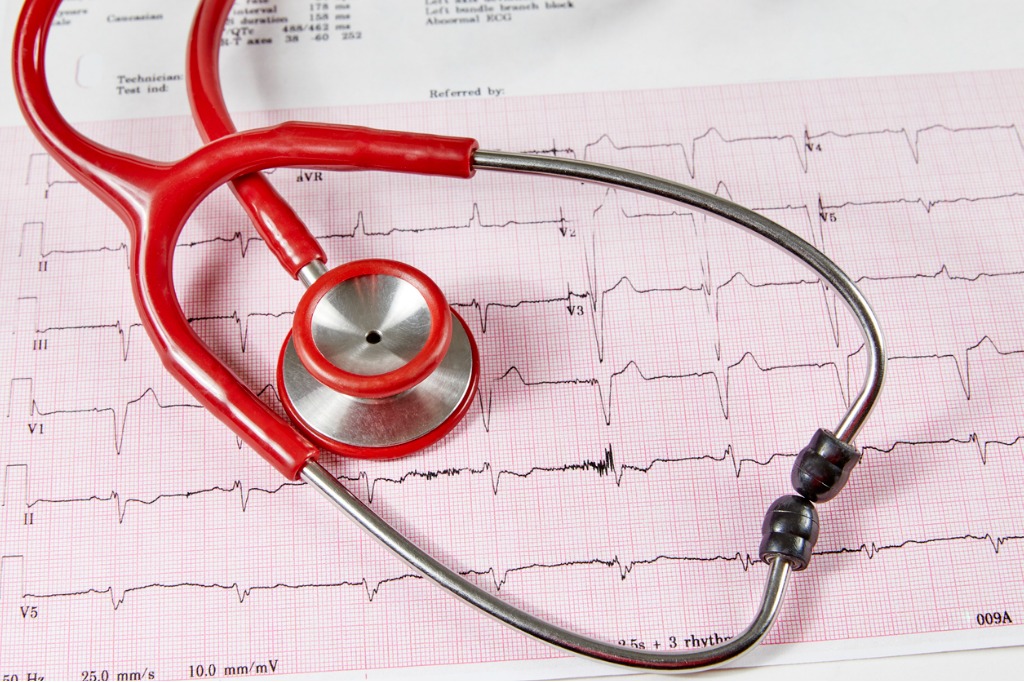
Electrocardiography (ECG) is a useful diagnostic tool in the diagnosis and management of ischemic heart disease and cardiac arrhythmia and its availability in the primary care setting is now common. Routine availability of ECG at the primary care level can facilitate early referrals to secondary care, while reducing unnecessary referrals where appropriate. Telecardiology has been in use in one form or another for just over a century, and has multiple applications.
Recent advances in telecardiology have allowed for rapid and reliable remote ECG interpretations.
Telecardiology can also refer to the telemonitoring of patients with an IMD as part of the management of a cardiac pathology (treatment or diagnosis).
Telecardiology can promote heart health by monitoring patients that carry an implantable medical device, such as a cardiac pacemaker, cardiac defibrillator or a rhythmic holter.
A 12-lead electrocardiogram (ECG) is a medical test that is recorded using leads, or nodes, attached to the body. Electrocardiograms, sometimes referred to as ECGs, capture the electrical activity of the heart and transfer it to graphed paper.
Single-lead ECG machines are available in the form of a watch-like device to enable quick monitoring when the patient needs it while still at home.
Defibrillators are devices that send an electric pulse or shock to the heart to restore a normal heartbeat.
A Holter monitor is a small, wearable device that records the heart’s rhythm. It’s used to detect or determine the risk of irregular heartbeats (arrhythmias). A Holter monitor test may be done if a traditional electrocardiogram (ECG or EKG) doesn’t provide enough details about the heart’s condition.
The use of telecardiological techniques increases the quality and safety of work in managing patients with cardiovascular disease in FP practice. Usage of telecardiologic devices can also save money and bridge the gap between the primary and secondary healthcare levels.
Telecardiology intervention is used for patients with heart failure and for telemonitoring. Telemonitoring (TM) aims to predict and prevent worsening heart failure (HF) episodes and improve self-care, patient education, treatment adherence and survival. Telemonitoring of patients with heart failure reduces the rate of death from any cause and the rate of heart-failure–related hospitalizations.
The most positive clinical effects of telecardiology were early diagnosis, early treatment, and mortality reduction. Telecardiology can help early diagnosis and treatment of cardiovascular diseases. It also has great potential in reducing health care costs and increasing quality of life and patient satisfaction.
The modern cardiovascular imaging era has seen the introduction in clinical practice of highly innovative and performing diagnostic features.
A telecardiogram is an electrocardiogram recorded at a distance from the subject being tested; for example, the electrocardiogram obtained through telemetry, or, as with a galvanometer in the laboratory, being connected by a wire with the patient in another room.
The most important examples of telemonitoring in cardiology include the use of implanted devices such as pacemakers and defibrillators, as well as wearable sensors and data processing units.
The American College of Cardiology (ACC) and Heartbeat Health, the first telemedicine and virtual care platform built by cardiologists for cardiologists, are joining forces to transform telehealth into comprehensive virtual care by ensuring cardiology practices around the world can incorporate clinical data into virtual patient communications to make real-time, informed clinical care decisions.
The American College of Cardiology is collaborating with Heartbeat Health to set a new standard for virtual care, providing cardiologists a full-service telemedicine solution with features that go beyond generic platforms.
It’s a complete, mobile-first model for cardiovascular and heart disease management that incorporates low-cost devices and wearables, in addition to enabling true patient and provider engagement.
Telemedicine in Pediatric Cardiology: A Scientific Statement From the American Heart Association
Increasingly, a large body of literature and real-world experience has developed, demonstrating that telemedicine increases pediatric cardiologists’ capacity to provide high-quality care to a greater number of patients by increasing the methods and efficiencies in which expert evaluation can be provided without geographic restriction. Specifically, the application of telemedicine has proven very useful in diagnosing and triaging critically ill patients, as well as stable outpatients, newborns, infants, and children, when distance or time creates challenges or an inaccessibility to pediatric cardiac care.
Medical Uses Of Echocardiography
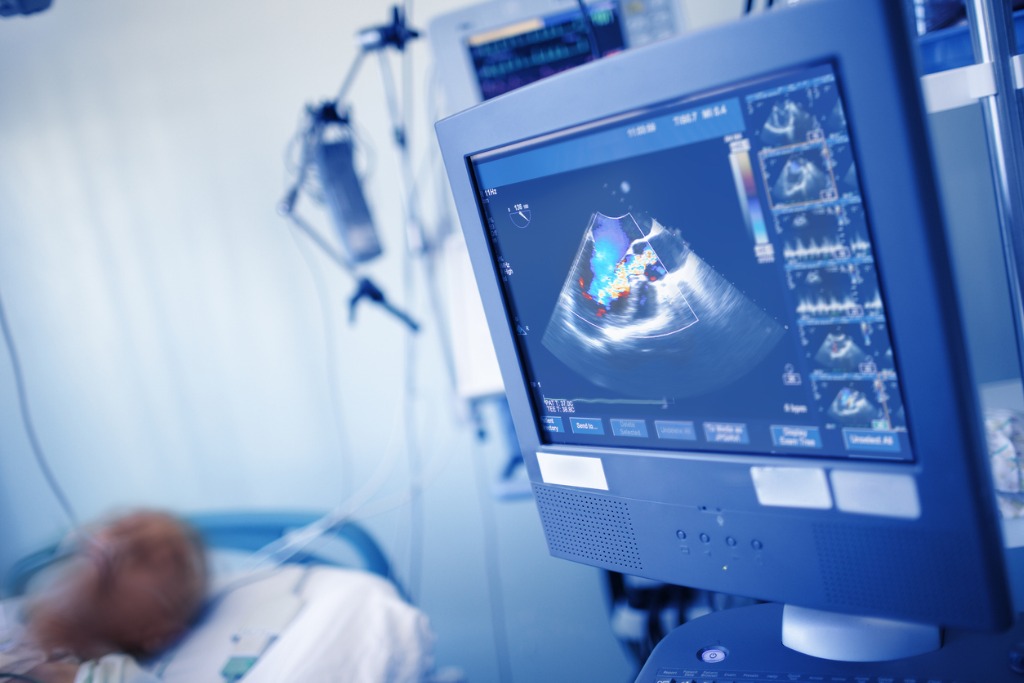
An echocardiogram is a test of the action of the heart using ultrasound waves to produce a visual display, used for the diagnosis or monitoring of heart disease. An echocardiogram is a procedure that uses high-energy sound waves (ultrasound) to look at tissues and organs inside the chest. Echoes from the sound waves form a picture of the size, shape, and position of the heart on a computer screen (echocardiogram).
An echocardiogram helps doctors diagnose heart conditions. An echocardiogram uses sound waves to produce images of the heart. This common test allows cardiac imaging specialists to see a patient’s heart beating and pumping blood. Cardiologists use the images from an echocardiogram to identify heart disease.
Health societies recommend the use of echocardiography for initial diagnosis when a change in the patient’s clinical status occurs and when new data from an echocardiogram would result in the physician changing the patient’s care. Health societies do not recommend routine testing when the patient has no change in clinical status or when a physician is unlikely to change care for the patient based on the results of testing.
A common example of overuse of echocardiography when not indicated is the use of routine testing in response to a patient diagnosis of mild valvular heart disease. In this case, patients are often asymptomatic for years before the onset of deterioration and the results of the echocardiogram would not result in a change in care without other change in clinical status.
Echocardiography now has a vast role in pediatrics, diagnosing patients with valvular heart disease and other congenital abnormalities. An emerging branch is fetal echocardiography, which involves echocardiography of an unborn fetus.
Cardiac Imaging Modalities
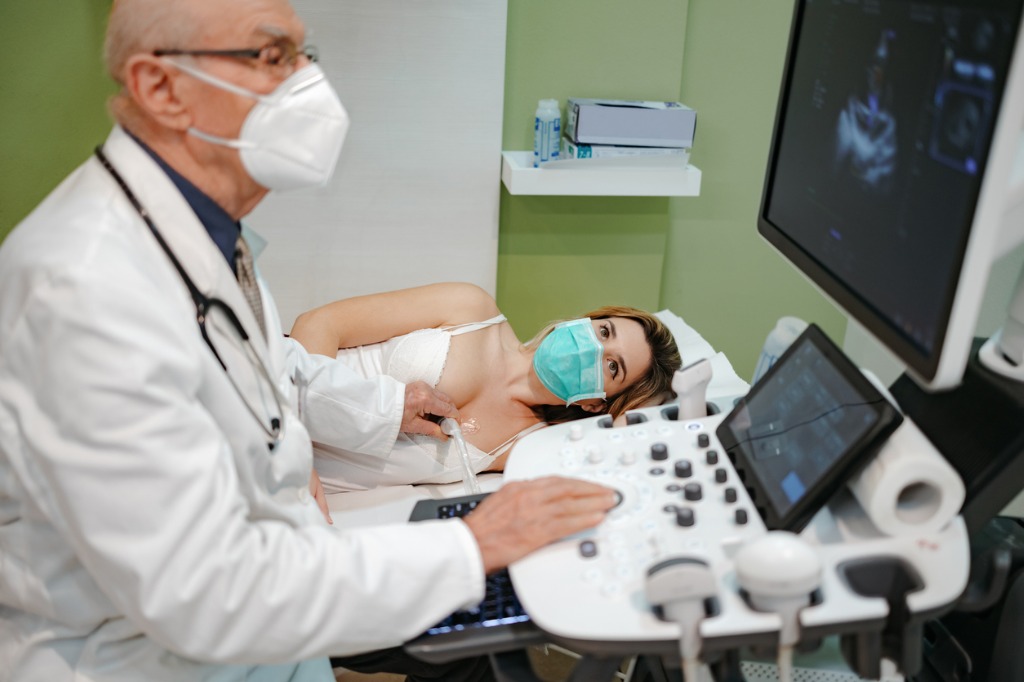
Several cardiac imaging modalities have become essential in the practice of modern cardiovascular medicine not only in diagnosis but also in the management of various cardiovascular diseases as well as in the guidance of invasive procedures. These modalities include echocardiography, myocardial perfusion imaging via nuclear scintigraphy, magnetic resonance imaging (MRI), and computed tomography (CT).
There are several different types of imaging modalities used in cardiology. They are usually discussed by the type of technique used: Ultrasound, magnetic resonance imaging (MRI), or computed tomography (CT).
Cardiovascular imaging has progressed rapidly over recent years. The field of cardiovascular imaging has seen a significant improvement over recent years due to advances in technology.
These advancements have led to a substantial reduction in the dose of radiation required for high-quality, rapid, reliable imaging. This has provided physicians and providers with better availability and accessibility to various imaging modalities and improved their clinical practicality.
The term cardiac imaging is now generally used for the noninvasive techniques such as echocardiography, cardiac magnetic resonance imaging (MRI), cardiac CT, and cardiac nuclear scintigraphy.
Efforts from both the medical and engineering communities have led to enormous advances in the field of noninvasive cardiovascular imaging, strengthening its key role in cardiologic diagnosis making and therapy guidance.
In 1925, when simple chest radiography was the only modality allowing clinicians to look at the heart, the size of the heart chambers was assessed by viewing the different silhouettes of the cardiac shadow.
Transthoracic echocardiography (TTE) first came into clinical use in the early 1960s. In 2023, there are many different advanced cardiovascular imaging modalities.
Each of these imaging modalities (echocardiography, cardiovascular CT (CCT), cardiovascular MR (CMR), invasive coronary angiography, cardiac positron emission tomography (PET) and nuclear cardiology (NC)) continue to develop.
Cardiac imaging modalities include echocardiography (echo), coronary angiogram, myocardial perfusion imaging via nuclear scintigraphy, cardiac magnetic resonance imaging (MRI), cardiac positron emission tomography (PET), single-photon emission computed tomography (SPECT), nuclear cardiac stress test, cardiac computed tomography (CT).
The M-mode (motion-mode) ultrasound is used for analyzing moving body parts commonly in cardiac and fetal cardiac imaging.
Cardiac Imaging Modalities
Video Posted On YouTube.com by MedLecturesMadeEasy On November 14, 2015
Types of Cardiac Imaging Studies And Tests Interpreted Remotely By NDI Cardiologists Via Telecardiology Systems

NDI cardiologists often interpret chest x-rays and deliver final reports to referring physicians online. A chest x-ray can show if fluid is building up in the lungs or the heart has become enlarged. In heart failure diagnosis, the chest x-ray is one of the first tests performed to determine the cause of heart failure symptoms.
Cardiac imaging includes several types of tests that take pictures of the heart and surrounding structures.
Non-invasive imaging plays a critical role in managing patients with cardiovascular disease. National Diagnostic Imaging cardiologists interpret various types of cardiac imaging tests.
Healthcare providers use the tests to diagnose and manage heart conditions. Examples of cardiac imaging methods are chest X-ray, cardiac MRI and nuclear cardiac stress testing.
Various telecardiology systems operate differently. Telecardiology has advantages for the individual patient in the interaction between primary and secondary care.
NDI cardiac radiologists interpret imaging techniques such as X-rays, ultrasound (echocardiograms), CT (computed tomography) scans and MRI (magnetic resonance imaging) scans.
Echocardiography is unique in that it can provide a great deal of clinical data and remain safe without any exposure to radiation.
Cardiac CT allows for direct visualization of coronary vasculature in three dimensions without the need for an invasive procedure like coronary catheterization.
Magnetic resonance angiography (MRA) is used to assess blood volumes of interest (eg, blood vessels in the chest or abdomen); all blood flow can be assessed simultaneously. MRA can be used to detect aneurysms, stenosis, or occlusions in the carotid, coronary, renal, or peripheral arteries.
Types of Cardiac Imaging: What You Need to Know Webinar
Video Posted On YouTube.com On May 24, 2022 By Johns Hopkins Medicine
Telecardiology And COVID
Telehealth offered a lifeline for cardiology patients during the COVID-19 pandemic. Despite the continuing dialectic around the efficacy of telehealth in cardiology, the onset of the global COVID-19 pandemic necessitated a more or less immediate shift toward remote modalities to ensure continuation of care for cardiology patients, without increasing health risks.
The Role of Telecardiology – Lessons from COVID-19 A Missed Opportunity or a New Hope?
At the beginning of the COVID-19 pandemic, with lockdowns and restrictions of physical contact, many editorials in scientific journals started to speak about the telemedicine solutions but no telemedicine program can be created overnight. In cardiology, the branch of telecardiology is well developed and the COVID-19 pandemic showed us the potential of this tool and the need for improvement in the months to come.
Telemedicine has been with us for a long time but is not properly implemented. Telecardiology provides excellent opportunities. It allows patients to take on a more active role in the healthcare system, facilitates patient-physician collaboration/communication. It has the potential to make smart use of every byte of data (more personalization, better information, an overall improvement in healthcare services), and shows promising results in cardiovascular prevention.
Obviously the telecardiology organization is a challenge for the health system, especially in times of a pandemic: We must prevent misuse due to the significant potential for system overload, and we need to evaluate constantly its usability, data accuracy and validation of the results obtained
We will need better and appropriate regulation of its use and we must be ready to overcome the resistance to change to a new cardiology practice.
Cardiology in the Time of COVID-19: Digital Medicine
Video Posted To YouTube.com On April 2, 2020 By The Texas Heart Institute
The COVID-19 pandemic is forcing doctors and health care teams around the globe to adapt to a health care environment that is changing by the hour. Physicians and hospitals are shifting priorities to prepare for and accommodate severely ill patients. As the disease spreads and new evidence emerges, we must be able to adapt our facilities and identify the risk factors for the development of cardiac complications in patients with COVID-19.
In response to the evolving pandemic, the Texas Heart Institute (THI) is dedicating its education series, Innovative Technologies & Techniques, to providing information to those in the medical community who are taking care of cardiovascular patients with and without COVID-19. The special series, Cardiology in the Time of COVID-19, will include discussions of current COVID-19 and cardiovascular care literature and will provide an online educational forum for discussing emerging topics related to preparing for and taking care of all patients being treated for COVID-19.
In each episode, THI medical directors and leadership will interview experts in their respective fields to provide early perspectives on relevant topics. The initial topics of discussion will explore strategies to consider when preparing facilities and staff for case surge and innovative practices for overcoming social distancing challenges to providing cardiac care during this unprecedented time. Importantly, because best practices are in flux and are evolving as we learn more about how this virus manifests, we will continually update and make available these web-based vignettes, for the educational benefit of our global medical community.
The video and its contents are for educational purposes only. The views and remarks represent those of the individual physicians and not those of Texas Heart Institute. The information presented is based on the physician’s observations and experiences in the evaluation of any product. Physicians should make their own informed evaluation.
Educational content published by the Texas Heart Institute does not provide specific medical advice; rather, these resources provide users with information to better understand their health and diagnosed disorders. Texas Heart Institute urges individuals to visit a qualified doctor for diagnosis and for specific medical advice.
Background
During ongoing coronavirus disease 2019 (COVID-19) pandemic, social isolation and lockdown measures were implemented to prevent spread of virus which created enormous challenges to patient healthcare. In order to overcome these challenges, teleconsultation (telecardiology) was initiated. Objective of this study was to assess outcome of telecardiology using audio/visual/audio-visual consultation among patients with implantable cardiac devices.
Methods
Telecardiology was performed (either physician-initiated or patient-initiated) among 1200 patients over a five-month period (July 13 to December 13, 2020) to review health status of patients to decide further course of treatment and to access their satisfaction level with telecardiology.
Results
Teleconsultation was cardiologist- and patient-initiated in 1042 (86.8%) and 158 (13.2%) cases, respectively. 1117 (93.2%) patients were stable, while scheduled admission, urgent hospitalization, and death were noted in 20 (1.8%), 45 (3.9%), and 18 (1.5%) patients, respectively. Next visit was rescheduled in 986 (82.2%), while 127 (10.6%) were called earlier because of battery depletion. Majority (n = 1077, 89.8%) were satisfied.
Conclusion
Telecardiology is an effective option during COVID-19 to minimize interpersonal contact, spread of disease, psychological stress, and burden on already stretched healthcare.
Telecardiology During The Covid-19 Pandemic: Past Mistakes And Future Hopes
Covid-19 has caused a striking global impact on public health services. The inevitable suspension of all scheduled visits without urgency and non-urgent hospitalizations has resulted in relevant modifications in our management of cardiac patients. Our goal should be to maintain high standards in the treatment of cardiovascular diseases, reducing the risk of exposure to Covid-19 for patients and healthcare professionals.
Our Division of Cardiology follows 300 patients in a Heart Failure Ambulatory and almost all of these, as CIEDs’ carriers, are monitored by remote monitoring; in addition, we follow more than 2000 CIEDs’ carriers using remote monitoring. The purpose of telemedicine, using telecommunications technology, must be to optimize the clinical management of heart failure patients at home, in order to improve their quality of life, reducing hospitalization and emergency department access, also promoting self-management.
The evolution of technology has led to the development and refinement of telemedicine and remote monitoring and even more in pandemic times these methods are to be considered a cornerstone. So that telemedicine can really become a well-structured reality, the following are fundamental: the uniform recognition of a reimbursement for this type of medical service, the creation of an organizational model with an adequately structured team, a valid integration with the territorial reality.
VIDEO: Creating A Telecardiology Program
Dave Fornell | March 24, 2022 | Patient Care
Ami Bhatt, MD, the American College of Cardiology (ACC) chief innovation officer, an adult congenital heart disease cardiologist at Mass General Hospital (MGH) in Boston, discusses the practical implications of implementing a telecardiology program. She is the former director of telecardiology at Mass General Hospital at the start of the pandemic 2020-2021.
While telemedicine has been around for more than a decade, it has never seen widespread adoption, mainly due to insurance companies preferring that patients have an in-person office visit. However, that quickly changed in the spring of 2020 as healthcare systems and government health officials looked for ways to reduce contact between people while still delivering care.
The Centers for Medicare and Medicaid Services (CMS) authorized payment waivers for telemedicine during the COVID emergency, and this helped open the floodgates for its use. Many medical societies are now lobbying to keep the CMS telemedicine reimbursement provisions in place after the pandemic subsides.
Current Cardiovascular Imaging Reports
Current Cardiovascular Imaging Reports provides in-depth review articles contributed by international experts on the most significant developments in the field.
By presenting clear, insightful, balanced reviews that emphasize recently published papers of major importance, the journal elucidates current and emerging concepts regarding cardiovascular imaging techniques and technologies.
- Imaging in Cardiac Sarcoidosis: Complementary Role of Cardiac Magnetic Resonance and Cardiac Positron Emission Tomography
- The Clinical Role of 2D and Doppler Echocardiography Artifacts: a Review
- Echo-Based Hemodynamics to Help Guide Care in Cardiogenic Shock: a Review
- Update on CT Imaging of Left Ventricular Assist Devices and Associated Complications
- Insights into Myocardial Perfusion PET Imaging: the Coronary Flow Capacity
Circulation: Cardiovascular Imaging | AHA/ASA Journals
- December 21, 2022: Utilization of Cardiovascular Magnetic Resonance Imaging for Resumption of Athletic Activities Following COVID-19 Infection: An Expert Consensus Document on Behalf of the American Heart Association Council on Cardiovascular Radiology and Intervention Leadership and Endorsed by the Society for Cardiovascular Magnetic Resonance
- December 2, 2022: Imaging for Transcatheter Mitral Valve Edge-to-Edge Repair for an Unusual Cause of Cardiogenic Shock
- December 2, 2022: Fatal Pulmonary Embolism Resulting From a Popliteal Venous Aneurysm
- November 30, 2022: Isolated Left Ventricular Apical Hypoplasia: A Very Rare Congenital Anomaly Characterized by Multimodality Imaging and Invasive Testing
Echocardiography Diagnostics Terminology
An echocardiogram (echo) is a test that diagnoses and manages heart disease. An echocardiogram uses electrodes to check your heart rhythm and ultrasound technology to see how blood moves through your heart.
Get a list of diagnostic echocardiography terminology and abbreviations, here.
- BSA – body surface area
- DT – deceleration time
- IVRT – isovolumic relaxation time
- LA – left atrium
- RA – right atrium
- LV – left ventricle
- RV – right ventricle
- LVOT – left ventricular outflow tract
- RVOT – right ventricular outflow tract
- PHT – pressure half time
- TAPSE – tricuspid annular plane systolic excursion
- VC – vena contracta
- EDD – end diastolic diameter
- ESD – end systolic diameter
- IVSd – interventricular septal end diastole
- PWd – posterior wall thickness
- LVMI – left ventricular mass index
- Ao asc – ascending aorta
- ST Jxn – sinotubular junction
- LAVI – left atrial volume index
- EDV – end-diastolic volume
- ESV – end-systolic volume
- EF – ejection fraction
- FS – fractional shortening
- RAVI – right atrial volume index
- RVOT – right ventricular outflow tract
- RVD – basal RV diameter
- IVC – inferior vena cava
- GLS – global longitudinal strain
- RVSP – right ventricular systolic pressure
- E/A ratio
In 2025, Contact National Diagnostic Imaging For Information On Online Cardiac Imaging Reporting Services
National Diagnostic Imaging may be contacted as follows:
- Call the main office at (216)-514-1199.
- Send an email to info@ndximaging.com.
- Complete the form above to request a quote.
How To Get A Telecardiology Or Remote Cardiology Job In The United States
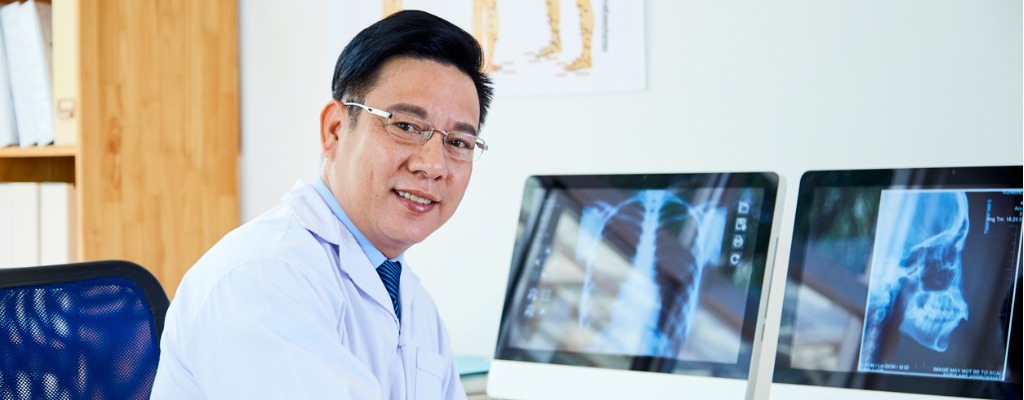
Popular teleradiology jobs include teleradiology support jobs, teleradiology technologist jobs, remote teleradiology jobs, at-home teleradiology jobs, international teleradiology jobs and neuroradiology teleradiology jobs.
Open US Teleradiology Jobs & Pay | Work Remotely At Home [How To Get A Daytime/Part Time Job At NDI]
Posted on YouTube.com On July 29 2022 by National Diagnostic Imaging
Submit Your CV Or Resume To Begin A Daytime, Full-Time Or Part-Time US Telecardiology Job Working Remotely From Home For The National Diagnostic Imaging Company
- Earn $10-$20K per month working part time as a telecardiologist for NDI.
- Make up to $240K annually working part time reading cardiac imaging studies remotely for NDI.
- You can earn up to $450K annually working full time interpreting cardiac imaging studies remotely for NDI.
3 Options To Contact NDI About An At Home Telecardiology Job
- Complete the form below and attach your CV.
- Email your CV and contact information to info@ndximaging.com.
- Call 216-514-1199 for Allan Rosen, NDI Vice President and Physician Recruiter
How To Get A Cardiology Telemedicine Job In The United States
To get a telecardiology job at home, submit your CV, here. To work as a telecardiologist, you need to have basic computer knowledge and have access to a high speed Internet service.
Review National Diagnostic Imaging teleradiology jobs and careers for physicians on Radworking.com. Based in Cleveland, National Diagnostic Imaging is a sub-specialty teleradiology service.
RadWorking.com offers a comprehensive nationwide radiology job board for physicians and allied health professionals seeking job opportunities.
Submit your CV or resume to begin a daytime, full-time or part-time US teleradiology job working remotely from home for the National Diagnostic Imaging company.
Teleradiology refers to the practice of a radiologist interpreting medical images while not physically present in the location where the images are generated. Teleradiology is the practice of the digital transmission of diagnostic medical images, such as X-rays, MRIs, ultrasounds and CTs, between health care practitioners.
View teleradiology jobs available on the American College of Radiology Career Center website. Search for and apply to open jobs at the American College of Radiology Career Center.
Apply for teleradiology jobs, radiologist jobs, IT project manager jobs and X-ray technician jobs on Indeed.com. View teleradiology, nighthawk, perm and locum tenens job openings and positions, here. Get information on US Department of Veterans Affairs teleradiology jobs, here. View teleradiology jobs in the United States on LinkedIn.com.
Accreditation Programs For Diagnostic Imaging Centers In The U.S.
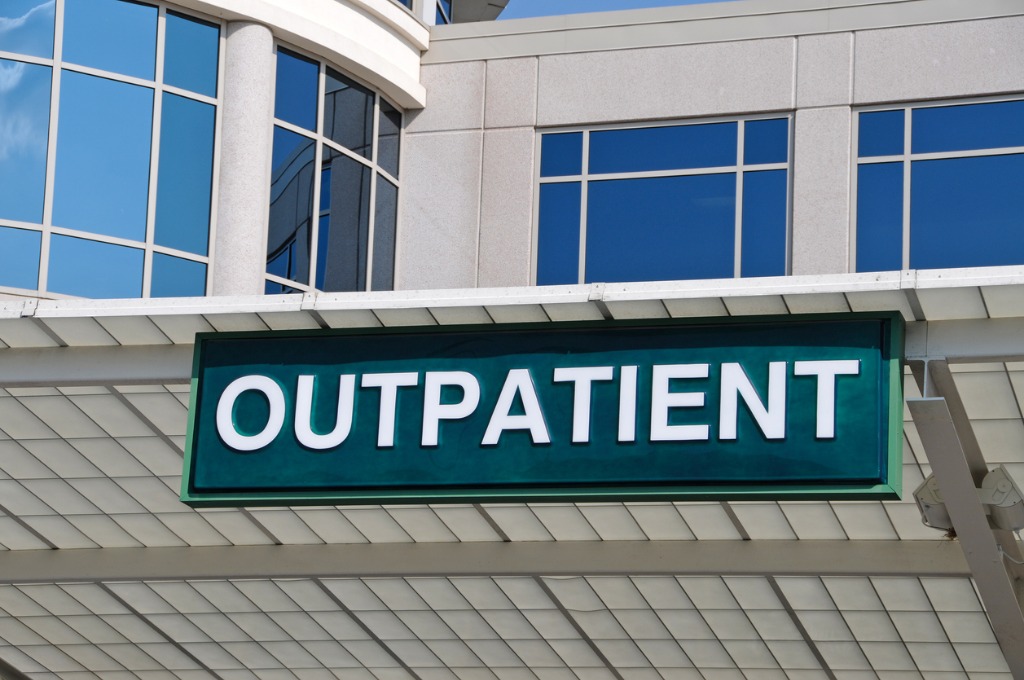
Diagnostic imaging lets doctors look inside human and animal bodies for clues about a medical condition. A variety of machines and techniques can create pictures of the structures and activities inside the body. The type of imaging a doctor uses depends on the symptoms and the part of your body being examined. Ultrasonography is a popular diagnostic imaging tool that looks inside a dog or cat’s body via the use of sound waves.
ACR Accreditation is recognized as the gold standard in medical imaging. The ACR offers accreditation programs in CT, MRI, breast MRI, nuclear medicine and PET as mandated under the Medicare Improvements for Patients and Providers Act (MIPPA) as well as for modalities mandated under the Mammography Quality Standards Act (MQSA). Accreditation application and evaluation are typically completed within 90 days.
The ACR has accredited more than 39,000 facilities in 10 imaging modalities. They offer accreditation programs in Mammography, CT, MRI, Breast MRI, Nuclear Medicine and PET, Ultrasound, Breast Ultrasound and Stereotactic Breast Biopsy.
The Joint Review Committee on Education in Radiologic Technology (JRCERT) accredits educational programs in radiography, radiation therapy, magnetic resonance, and medical dosimetry.
The National Accreditation Program for Breast Centers (NAPBC) provides the structure and resources you need to develop and operate a high-quality breast center. Programs that are accredited by the NAPBC follow a model for organizing and managing a breast center to facilitate multidisciplinary, integrated, comprehensive breast cancer services.
Get information from the Centers for Medicare & Medicaid Services (CMS) about their requirements for accreditation of advanced diagnostic imaging suppliers, here.
The Intersocietal Accreditation Commission (IAC) is a nonprofit, nationally recognized accrediting organization. The IAC was founded by medical professionals to advance appropriate utilization, standardization and quality of diagnostic imaging and intervention-based procedures.
The IAC is a nonprofit organization in operation to evaluate and accredit facilities that provide diagnostic imaging and procedure-based modalities, thus improving the quality of patient care provided in private offices, clinics and hospitals where such services are performed.
With a 30-year history of offering medical accreditation to facilities within the U.S. and Canada, IAC is also now offering accreditation in international markets. The IAC programs for accreditation are dedicated to ensuring quality patient care and promoting health care and all support one common mission: Improving health care through accreditation®.
The ACVR is the American Veterinary Medical Association (AVMA) recognized veterinary specialty organization™ for certification of Radiology, Radiation Oncology and Equine Diagnostic Imaging.
If you are a radiology imaging service in the United States that is looking for a company that can provide telecardiology coverage for your current and future case volume, contact National Diagnostic Imaging by phone at 216-514-1199 or by emailing info@ndximaging.com.
Imaging Facilities Accredited by the American College of Radiology
ACR accreditation helps assure your patients that you provide the highest level of image quality and safety. The process documents that your facility meets requirements for equipment, medical personnel and quality assurance.
Use this search form to find imaging facilities accredited by the American College of Radiology.
Facilities: To verify the accreditation status of specific units within your imaging facility, please call 1-800-770-0145.
ACR Accredited Facility Designations
Video Posted On You YouTube.com On November 11, 2015 By RadiologyACR
ACR National Radiology Data Registry
The National Radiology Data Registry is a tool for improving the quality of patient care using comparative performance and feedback on quality measures.
Comparing practice performance to regional and national benchmarks is an important tool for improving the quality of patient care. Participate in one of the eight registries that comprise the ACR National Radiology Data Registry (NRDR) to help your facility benchmark outcomes and process-of-care measures and develop quality improvement programs.
- Clinical Decision Support Registry (CDSR)
- CT Colonography (CTC) Registry
- Lung Cancer Screening Registry (LCSR)
- National Mammography Database (NMD)
- Dose Index Registry (DIR)
- General Radiology Improvement Database (GRID)
- 3D Printing Registry (3DP)
Telecardiology Market Size, Share 2023 Global Industry Forecasts Analysis, Company Profiles, Competitive Landscape and Key Regions Analysis
Telecardiology Market is 2023 Research Report on Global professional and comprehensive report on the Telecardiology Market. The report monitors the key trends and market drivers in the current scenario and offers on the ground insights.
Dec 06, 2022 (The Expresswire) — Global “Telecardiology Market” (2023-2028) research report indicates all the important factors related to various growth factors including latest trends and development in the global industry. It provides comprehensive overview of business development plans of top manufacturers, current industry status, growth segments and future scope. The Telecardiology market report aims to provide regional development to the future market growth rate, market driving factors including sales revenue. It offers detailed research and analysis of key aspects and highlights the current market situations with various research techniques like SWOT and PESTLE analysis. Furthermore, the report provides insightful information on future strategies and opportunities of global players.
Global Telecardiology Market Report 2023 is spread across 99 pages and provides exclusive vital statistics, data, information, trends and competitive landscape details in this niche sector.
Get a sample PDF of the report at https://www.researchreportsworld.com/enquiry/request-sample/21960387.
List of TOP KEY PLAYERS in Telecardiology Market Report are –
The information for each competitor includes, Company Profile, Main Business Information, SWOT Analysis, Sales, Revenue, Price and Gross Margin, Market Share, etc.
Market Analysis and Insights:
Telecardiology is the provision of diagnosis and health monitoring of cardiac patients by physicians and healthcare professional from a distant location with the help of ICT. It is the branch of telemedicine services, which focuses on treatment of cardiovascular diseases (CVDs). Telecardiology services enable healthcare professional to access cardiac data of patient such as cardiac test results in the form of text, images and videos.
Report Overview
Due to the COVID-19 pandemic and Russia-Ukraine War Influence, the global market for Telecardiology estimated at USD million in the year 2022, is projected to reach a revised size of USD million by 2028, growing at a CAGR of % during the forecast period 2022-2028.
Factors such as a rise in investments in cardiology informatics, connected devices, and mobile solution for advanced cardiac care are driving the growth of the telecardiology market. The increase in ICT spending in the telecardiology sector has led to increased installations of advanced networking solutions to speed up the transfer rate of medical data. In addition, the market for cardiology teleconsultation service will also witness high growth in the coming years owing to rapid improvements in the primary and secondary healthcare and the increasing acceptance of telecardiology technology among cardiologists and patients.
Report Scope
This latest report researches the industry structure, revenue and gross margin. Major players headquarters, market shares, industry ranking and profiles are presented. The primary and secondary research is done in order to access up-to-date government regulations, market information and industry data. Data were collected from the Telecardiology companies, distributors, end users, industry associations, governments’ industry bureaus, industry publications, industry experts, third party database, and our in-house databases.
This report also includes a discussion of the major players across each regional Telecardiology market. Further, it explains the major drivers and regional dynamics of the global Telecardiology market and current trends within the industry.
Get a Sample Copy of the Telecardiology Market Report 2023-2028
The report also focuses on global major leading industry players of Global Telecardiology market analysis providing information such as company profiles, product picture and specification, capacity, production, price, cost, revenue and contact information. This report focuses on Telecardiology Market Trend, volume and value at global level, regional level and company level. From a global perspective, this report represents overall Telecardiology Market share by analyzing historical data and future prospect.
The Global Telecardiology market size research provides product overview and scope of Telecardiology. The Global Telecardiology Market Share analysis is provided for the international markets including development trends, competitive landscape analysis, and key regions development status. Global Telecardiology Sales Growth Rate analysis and comparison by history. This report also states import/export consumption, supply and demand Figures, cost, price, revenue and gross margins. For each manufacturer covered, this report analyses their Telecardiology manufacturing sites, capacity, production, ex-factory price, revenue and market share in global market.
On the basis of product, this report displays the production, revenue, price, market share and growth rate of each type, primarily split into:
- IT Services
- Telecom
- Software
- Hardware
On the basis of the end users/applications, this report focuses on the status and outlook for major applications/end users, consumption (sales), market share and growth rate for each application, including:
- Diagnosis
- Health Monitoring
Enquire before purchasing this report https://www.researchreportsworld.com/enquiry/pre-order-enquiry/21960387.
Telecardiology Market Segment by Region:
- North America (the United States, Canada and Mexico)
- Europe (Germany, UK, France, Italy, Russia and Turkey, etc.)
- Asia-Pacific (China, Japan, Korea, India, Australia and Southeast Asia (Indonesia, Thailand, Philippines, Malaysia, and Vietnam)
- South America (Brazil etc.)
- The Middle East and Africa (North Africa and GCC Countries)
COVID-19 Impact on Market:
The recent COVID-19 outbreak first began in Wuhan (China) in December 2019, and since then, it has spread around the globe at a fast pace. China, Italy, Iran, Spain, the Republic of Korea, France, Germany, and the US are among the worst-affected countries in terms of positive cases and reported deaths, as of March 2020. The COVID-19 outbreak has affected economies and industries in various countries due to lockdowns, travel bans, and business shutdowns. The global food and beverage industry is one of the major industries facing serious disruptions such as supply chain breaks, technology events cancellations, and office shutdowns as a result of this outbreak. China is the global manufacturing hub, with the presence of and the largest raw material suppliers. The overall market breaks down due to COVID-19 is also affecting the growth of the bacon market due to shutting down of factories, obstacle in supply chain, and downturn in world economy.
To Know How COVID-19 Pandemic Will Impact Telecardiology Market/Industry- Request a sample copy of the report https://www.researchreportsworld.com/enquiry/request-covid19/21960387.
Questions covered in this Telecardiology Market Research Report:
- What is the Telecardiology Market Size?
- Which are the top players for this Telecardiology Market?
- What is the market growth of this Telecardiology Industry?
- What will be the CAGR for Telecardiology Market during 2023-2028?
- What developments are going on in that technology? Which trends are causing these developments?
- Who are the global key players in this Telecardiology market? What are their company profile, their product information, and contact information?
- What was global market status of Telecardiology market? What was capacity, production value, cost and profit of Telecardiology market?
- What is current market status of Telecardiology industry? What is market competition in this industry, both company, and country wise? What is market analysis of Telecardiology market by taking applications and types in consideration?
- What are projections of global Telecardiology industry considering capacity, production and production value? What will be the estimation of cost and profit? What will be market share, supply and consumption?
- What is Telecardiology market chain analysis by upstream raw materials and downstream industry?
- What is economic impact on Telecardiology industry? what are global macro-economic environment analysis results?
- What are market dynamics of Telecardiology market? what are challenges and opportunities?
- What should be entry strategies, countermeasures to economic impact, and marketing channels for Telecardiology industry?
The report has been curated after observing and studying various factors that determine regional growth such as economic, environmental, social, technological, and political status of the particular region. Analysts have studied the data of revenue, production, and manufacturers of each region.
Purchase this report (Price 5600 USD for single user license) https://www.researchreportsworld.com/purchase/21960387.
Major Points from Table of Contents:
1 Report Overview
1.1 Study Scope
1.2 Market Analysis by Type
1.2.1 Global Telecardiology Market Size Growth Rate by Type: 2017 VS 2021 VS 2028
1.2.2 IT Services
1.2.3 Telecom
1.2.4 Software
1.2.5 Hardware
1.3 Market by Application
1.3.1 Global Telecardiology Market Growth Rate by Application: 2017 VS 2021 VS 2028
1.3.2 Diagnosis
1.3.3 Health Monitoring
1.4 Study Objectives
1.5 Years Considered
2 Market Perspective
2.1 Global Telecardiology Market Size (2017-2028)
2.2 Telecardiology Market Size across Key Geographies Worldwide: 2017 VS 2021 VS 2028
2.3 Global Telecardiology Market Size by Region (2017-2022)
2.4 Global Telecardiology Market Size Forecast by Region (2023-2028)
2.5 Global Top Telecardiology Countries Ranking by Market Size
3 Telecardiology Competitive by Company
3.1 Global Telecardiology Revenue by Players
3.1.1 Global Telecardiology Revenue by Players (2017-2022)
3.1.2 Global Telecardiology Market Share by Players (2017-2022)
3.2 Global Telecardiology Market Share by Company Type (Tier 1, Tier 2, and Tier 3)
3.3 Company Covered: Ranking by Telecardiology Revenue
3.4 Global Telecardiology Market Concentration Ratio
3.4.1 Global Telecardiology Market Concentration Ratio (CR5 and HHI)
3.4.2 Global Top 10 and Top 5 Companies by Telecardiology Revenue in 2021
3.5 Global Telecardiology Key Players Head office and Area Served
3.6 Key Players Telecardiology Product Solution and Service
3.7 Date of Enter into Telecardiology Market
3.8 Mergers and Acquisitions, Expansion Plans
4 Global Telecardiology Breakdown Data by Type
4.1 Global Telecardiology Historic Revenue by Type (2017-2022)
4.2 Global Telecardiology Forecasted Revenue by Type (2023-2028)
5 Global Telecardiology Breakdown Data by Application
5.1 Global Telecardiology Historic Market Size by Application (2017-2022)
5.2 Global Telecardiology Forecasted Market Size by Application (2023-2028)
6 North America
6.1 North America Telecardiology Revenue by Company (2020-2022)
6.2 North America Telecardiology Revenue by Type (2017-2028)
6.3 North America Telecardiology Revenue by Application (2017-2028)
6.4 North America Telecardiology Revenue by Country (2017-2028)
6.4.1 U.S.
6.4.2 Canada
7 Europe
7.1 Europe Telecardiology Revenue by Company (2020-2022)
7.2 Europe Telecardiology Revenue by Type (2017-2028)
7.3 Europe Telecardiology Revenue by Application (2017-2028)
7.4 Europe Telecardiology Revenue by Country (2017-2028)
7.4.1 Germany
7.4.2 France
7.4.3 U.K.
7.4.4 Italy
7.4.5 Russia
8 Asia Pacific
8.1 Asia Pacific Telecardiology Revenue by Company (2020-2022)
8.2 Asia Pacific Telecardiology Revenue by Type (2017-2028)
8.3 Asia Pacific Telecardiology Revenue by Application (2017-2028)
8.4 Asia Pacific Telecardiology Revenue by Region (2017-2028)
8.4.1 China
8.4.2 Japan
8.4.3 South Korea
8.4.4 India
8.4.5 Australia
8.4.6 Taiwan
8.4.7 Indonesia
8.4.8 Thailand
8.4.9 Malaysia
8.4.10 Philippines
8.4.11 Vietnam
With tables and figures helping analyze worldwide Global Telecardiology Market Forecast provides key statistics on the state of the industry and is a valuable source of guidance and direction for companies and individuals interested in the market.
Browse complete table of contents at https://www.researchreportsworld.com/TOC/21960387.
About Us:
Research Reports World – is the credible source for gaining the market reports that will provide you with the lead your business needs. At Research Reports World, our objective is providing a platform for many top-notch market research firms worldwide to publish their research reports, as well as helping the decision makers in finding most suitable market research solutions under one roof. Our aim is to provide the best solution that matches the exact customer requirements. This drives us to provide you with custom or syndicated research reports.

